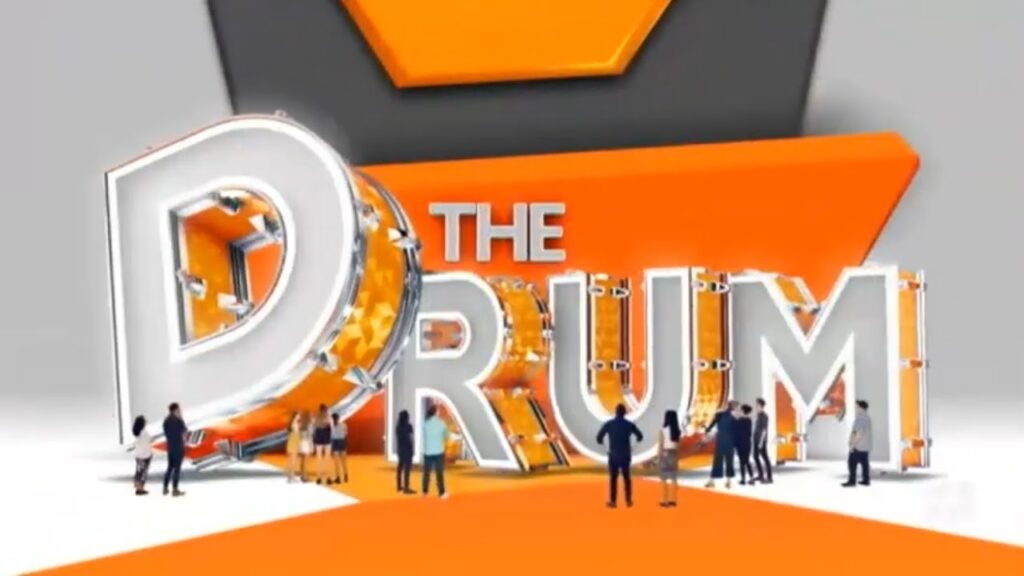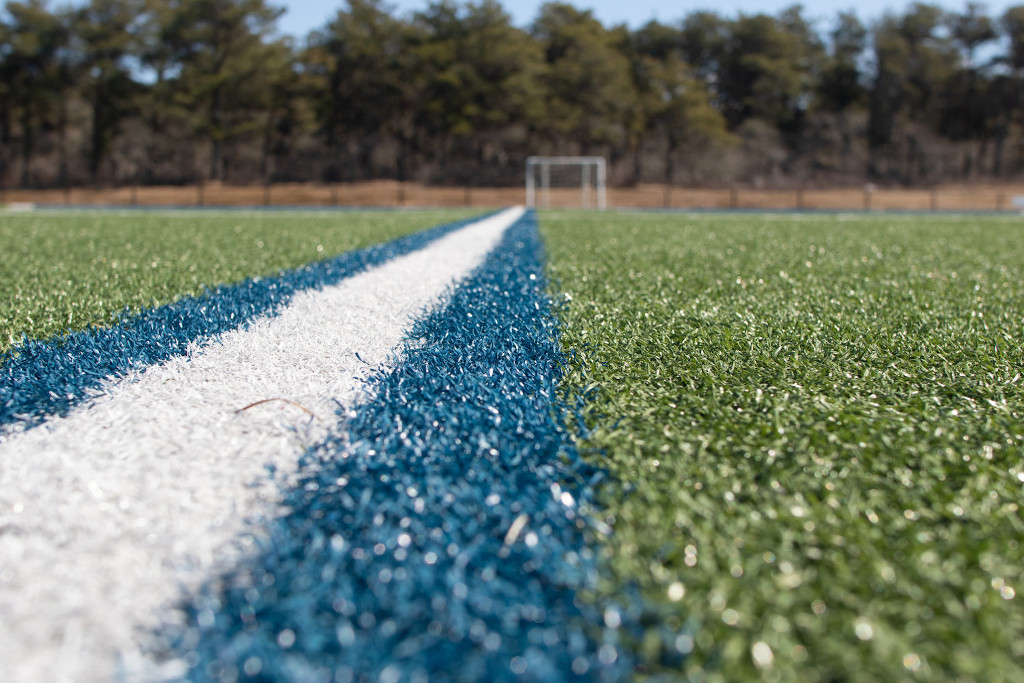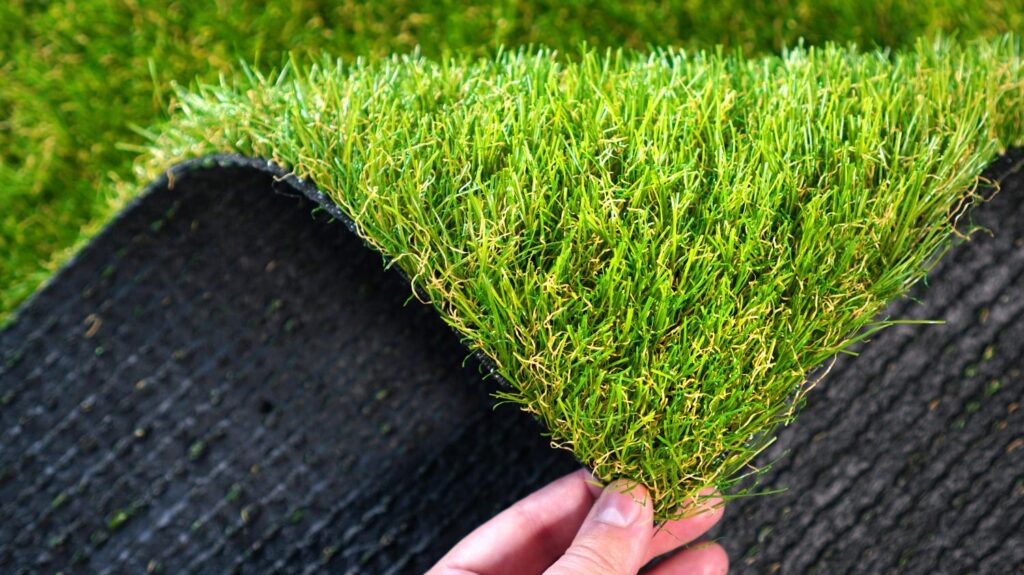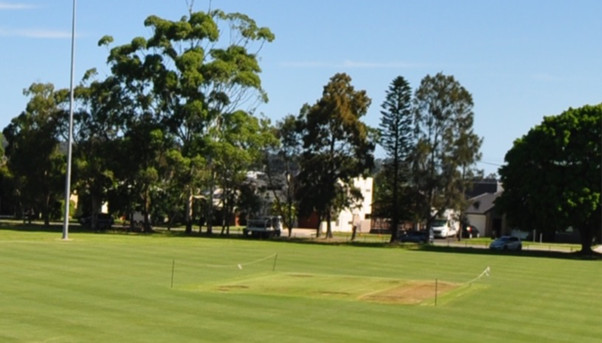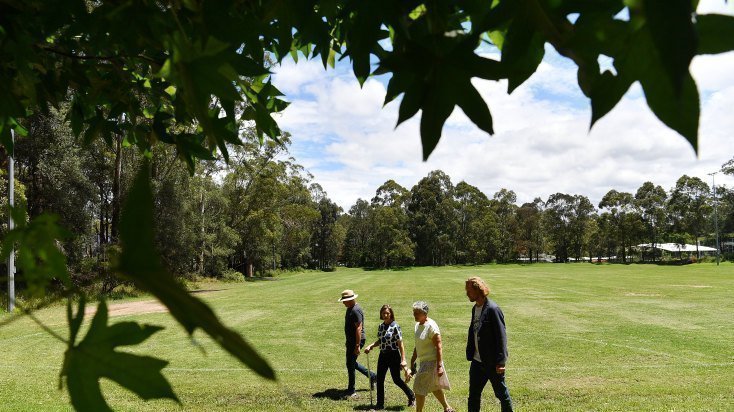Boston’s mayor, Michelle Wu, has ordered no new artificial turf to be installed in city parks, making Boston the largest municipality in a small but growing number around the nation to limit use of the product because it contains dangerous chemicals.
All artificial turf is made with toxic PFAS compounds and some is still produced with ground-up tires that can contain heavy metals, benzene, VOCs and other carcinogens that can present a health threat. The material also emits high levels of methane, a potent greenhouse gas, and sheds microplastics and other chemicals into waterways.
“We already know there are toxic chemicals in the products, so why would we continue to utilize them and have children roll around on them when we have a safe alternative, which is natural grass?” asked Sarah Evans, an environmental health professor for the Icahn School of Medicine at Mount Sinai.
Beyond chemical risks, the fields can act as heat islands that increase playing field temperatures to as much as 93C (200F), Evans noted. National Football League players are pressuring the league to ban artificial turf because of injuries, while the US national soccer teams will only play on natural grass for the same reason.
The federal government estimates 12,000 synthetic turf fields exist in the US, and at least 1,200 more are installed annually. Proponents say they are easier to maintain than grass fields and are not prone to “flooding”, though they do also require significant maintenance. The product is also increasingly used on playgrounds or as alternatives to lawns in drought-plagued regions.
But in recent years, municipalities have begun limiting their use via bans or moratoriums, including at least four in Massachusetts before Boston, two in California’s Bay Area and several in Connecticut.
In a statement to the Guardian, a spokesperson for Wu said: “The city has a preference for grass playing surfaces wherever possible and will not be installing playing surfaces with PFAS chemicals moving forward.”
Elsewhere, battles over proposed artificial fields are playing out. In Martha’s Vineyard, the school district is suing the city for prohibiting an artificial field from being installed because of concerns that it would contaminate an aquifer from which the town draws its drinking water. Meanwhile, voters in Malden, just north of Boston, may settle a heated debate over a proposed artificial field.
In Portsmouth, New Hampshire, city officials thought they had ordered a PFAS-free artificial turf field, but later testing revealed that it contained high levels of the chemicals. A state-level proposal to ban artificial turf recently failed in Massachusetts, and public health advocates and legislators in another state are planning to propose a ban on the material, though they declined to say on the record which state until the proposal is introduced.
Artificial turf is made with several layers including plastic grass blades, plastic backing that holds the blades in place and infill that weighs down the turf and helps blades stand upright. Until recently, infill was always made with recycled rubber tires called crumb rubber. However, independent and Environmental Protection Agency testing found the material contains high levels of dangerous chemicals.
“It seems kind of nonsensical to put ground-up tires in a field where children are playing,” said Kyla Bennett, a former EPA official and director of science policy at Public Employees for Environmental Responsibility (Peer).
Some companies have begun using cork as infill, but industry has said the grass blades and backing cannot be made without PFAS.
PFAS, or per- and polyfluoroalkyl substances, are a class of about 12,000 chemicals often used to make products resist water, stain and heat. They are called “forever chemicals” because they don’t naturally break down, and are linked to cancer, liver problems, thyroid issues, birth defects, kidney disease, decreased immunity and other serious health problems.
PFAS can be absorbed through the skin, inhaled, ingested or get in open wounds as they break off from the plastic blades, and children are considered more vulnerable to exposure because they are smaller and their bodies are still developing.
Some manufacturers have claimed the amount of PFAS used in artificial turf isn’t high enough to be dangerous, or that they use “safe” PFAS. “Independent research has shown time and time again that synthetic turf systems provide many community benefits and continue to meet and exceed regulatory standards for human health, safety and performance,” the Synthetic Turf Council, an industry trade group, said in a statement to the Guardian.
But no studies have been completed on how PFAS or other chemicals move from artificial turf to children, so the industry doesn’t know if it’s safe, Evans said. Moreover, the fields are another of myriad potential daily exposures to PFAS in consumer products, food and water, Evans said.
Public health advocates note all PFAS studied have been found to accumulate in the environment and be toxic to humans, and, once in the environment, “safe” compounds used in manufacturing break down into unsafe chemicals.
Testing of multiple artificial fields has found the presence of highly toxic PFAS compounds like 6:2 FTOH and PFOS. The EPA recently revised its health advisory for PFOS to state that effectively no level of exposure in drinking water is safe.
“It’s only a matter of time before [artificial turf] is banned,” Bennett said. “In a few years we’re going to be asking, ‘How on Earth did we ever allow this to happen?’”
Source: The Guardian. 30th Sep 2022 | Click here

